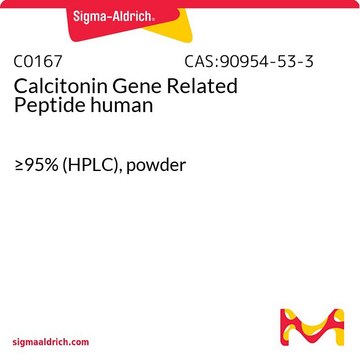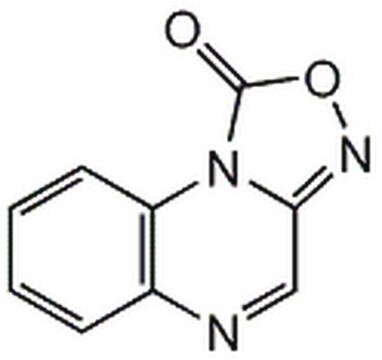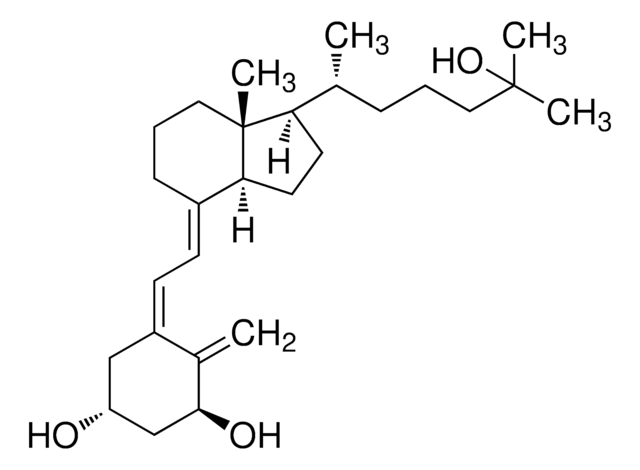Kluczowe dokumenty
C2806
Calcitonin Gene Related Peptide Fragment 8-37 human
≥97% (HPLC), powder
Synonim(y):
α-CGRP 8-37, FBHuman
About This Item
Polecane produkty
Poziom jakości
Próba
≥97% (HPLC)
Formularz
powder
skład
Peptide content, ~70%
temp. przechowywania
−20°C
ciąg SMILES
CC(C)C[C@H](NC(=O)CNC(=O)[C@H](C)NC(=O)[C@H](CC(C)C)NC(=O)[C@H](CCCNC(N)=N)NC(=O)[C@H](Cc1c[nH]cn1)NC(=O)[C@@H](NC(=O)[C@@H](N)C(C)C)[C@@H](C)O)C(=O)N[C@@H](CC(C)C)C(=O)N[C@@H](CO)C(=O)N[C@@H](CCCNC(N)=N)C(=O)N[C@@H](CO)C(=O)NCC(=O)NCC(=O)N[C@@H](C(C)C)C(=O)N[C@@H](C(C)C)C(=O)N[C@@H](CCCCN)C(=O)N[C@@H](CC(N)=O)C(=O)N[C@@H](CC(N)=O)C(=O)N[C@@H](Cc2ccccc2)C(=O)N[C@@H](C(C)C)C(=O)N3CCC[C@H]3C(=O)N[C@@H]([C@@H](C)O)C(=O)N[C@@H](CC(N)=O)C(=O)N[C@@H](C(C)C)C(=O)NCC(=O)N[C@@H](CO)C(=O)N[C@@H](CCCCN)C(=O)N[C@@H](C)C(=O)N[C@@H](Cc4ccccc4)C(N)=O
InChI
1S/C139H230N44O38/c1-66(2)48-86(161-102(193)60-155-113(197)74(17)159-120(204)87(49-67(3)4)168-118(202)83(40-31-45-152-138(147)148)163-123(207)90(53-80-57-151-65-158-80)173-136(220)111(77(20)188)182-131(215)105(145)69(7)8)121(205)169-88(50-68(5)6)122(206)176-96(64-186)129(213)165-84(41-32-46-153-139(149)150)119(203)175-94(62-184)115(199)156-58-101(192)154-59-104(195)177-107(71(11)12)134(218)179-108(72(13)14)133(217)166-82(39-28-30-44-141)117(201)171-91(54-98(142)189)125(209)172-92(55-99(143)190)124(208)170-89(52-79-36-25-22-26-37-79)126(210)180-109(73(15)16)137(221)183-47-33-42-97(183)130(214)181-110(76(19)187)135(219)174-93(56-100(144)191)127(211)178-106(70(9)10)132(216)157-61-103(194)162-95(63-185)128(212)164-81(38-27-29-43-140)116(200)160-75(18)114(198)167-85(112(146)196)51-78-34-23-21-24-35-78/h21-26,34-37,57,65-77,81-97,105-111,184-188H,27-33,38-56,58-64,140-141,145H2,1-20H3,(H2,142,189)(H2,143,190)(H2,144,191)(H2,146,196)(H,151,158)(H,154,192)(H,155,197)(H,156,199)(H,157,216)(H,159,204)(H,160,200)(H,161,193)(H,162,194)(H,163,207)(H,164,212)(H,165,213)(H,166,217)(H,167,198)(H,168,202)(H,169,205)(H,170,208)(H,171,201)(H,172,209)(H,173,220)(H,174,219)(H,175,203)(H,176,206)(H,177,195)(H,178,211)(H,179,218)(H,180,210)(H,181,214)(H,182,215)(H4,147,148,152)(H4,149,150,153)/t74-,75-,76+,77+,81-,82-,83-,84-,85-,86-,87-,88-,89-,90-,91-,92-,93-,94-,95-,96-,97-,105-,106-,107-,108-,109-,110-,111-/m0/s1
Klucz InChI
NDACAFBDTQIYCQ-YVQXRMNASA-N
informacje o genach
human ... CALCA(796)
Szukasz podobnych produktów? Odwiedź Przewodnik dotyczący porównywania produktów
Powiązane kategorie
Amino Acid Sequence
Opis ogólny
Zastosowanie
Działania biochem./fizjol.
Calcitonin gene-related peptide (CALCA) serves as a proangiogenic growth factor in the development of human placenta. Mutations of CALCA gene is associated with Parkinson′s disease, ovarian cancer and essential hypertension. CALCA induce vascular endothelial cell proliferation, migration and capillary-like tube formation.
Inne uwagi
Kod klasy składowania
11 - Combustible Solids
Klasa zagrożenia wodnego (WGK)
WGK 3
Temperatura zapłonu (°F)
Not applicable
Temperatura zapłonu (°C)
Not applicable
Środki ochrony indywidualnej
Eyeshields, Gloves, type N95 (US)
Wybierz jedną z najnowszych wersji:
Masz już ten produkt?
Dokumenty związane z niedawno zakupionymi produktami zostały zamieszczone w Bibliotece dokumentów.
Klienci oglądali również te produkty
Nasz zespół naukowców ma doświadczenie we wszystkich obszarach badań, w tym w naukach przyrodniczych, materiałoznawstwie, syntezie chemicznej, chromatografii, analityce i wielu innych dziedzinach.
Skontaktuj się z zespołem ds. pomocy technicznej















